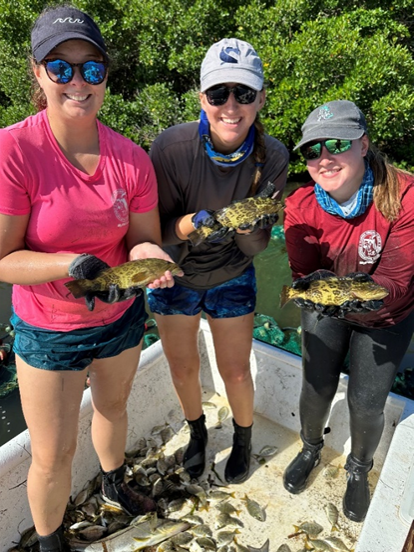Director’s Note: Importance of Sarasota Bay to offshore fisheries
As you likely know, we track the health of Sarasota Bay by more than water quality alone. Our Report Card on Ecosystem Health includes two water quality parameters (the amount of nitrogen in the water and the amount of phytoplankton in the water) but also trends in seagrass coverage, and a citizen-scientist effort to collect information on the amount of macroalgae on the bay bottom. The water quality data are collected by Manatee County staff and Mote Marine Lab staff and are paid for – as has been the case for about 30 years – by Manatee and Sarasota counties. The seagrass maps are conducted by the Southwest Water Management District (SWFWMD) staff and its hired consultants.

Staff from the Florida Fish and Wildlife Conservation Commission (FFWCC) sample over 200 sites in Sarasota Bay for fish populations, using various gear types. Since the gear types vary between different bay segments, we can’t really compare one part of the bay to the other, but we can track the number of fish in each bay segment over time, and we can compare our findings to those from Tampa Bay and Charlotte Harbor, also sampled by FFWCC.
You might have heard that “over 70% of commercially and recreationally important species of fish in the Gulf of Mexico spend at least some portion of their life cycles in estuaries.” That is true, and the photo shown on the left is proof of that. This photo is of three FFWCC staff, holding three juvenile Gag Grouper (Myctoperca microlepis) that were sampled (and then released) in upper Sarasota Bay. Without healthy estuaries, Gag Grouper and other species would not be able to complete their life cycles.
We often highlight how a healthy Sarasota Bay is good for our quality of life and our economy. It’s also the reason why we don’t have masses of starving manatees being carted away, compared to much of the Indian River Lagoon the last three years. But if you go out to a restaurant over the weekend and have blackened grouper for lunch or dinner, it could be that that fish – caught as an adult way offshore in the open waters of the Gulf of Mexico – made it to an adult stage by being fortunate enough to have been “raised” in a cleaner and healthier Sarasota Bay.
